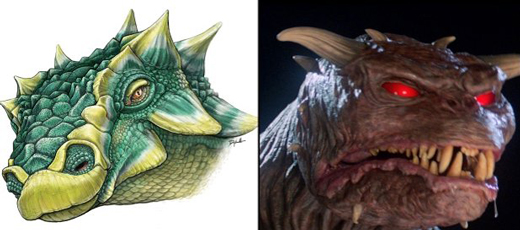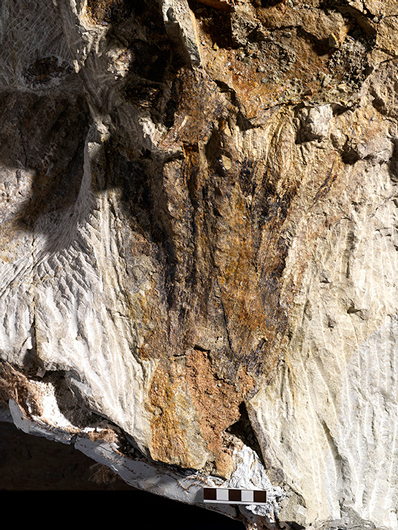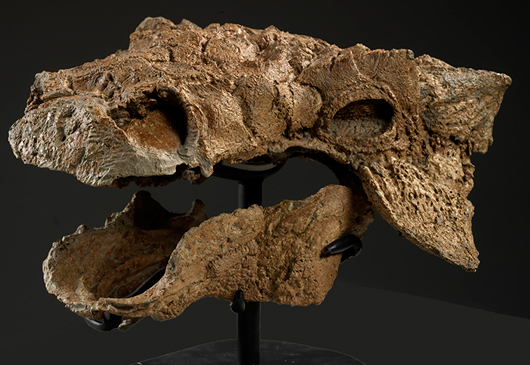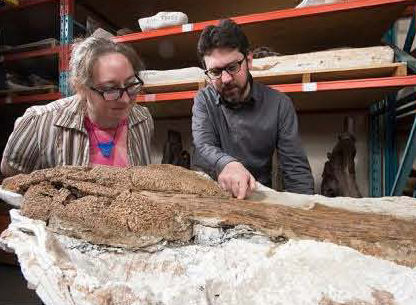Zuul – The Destroyer of Shins
Zuul crurivastator – A New Ankylosaurid from the Judith River Formation of Montana
Another day and another new dinosaur, this time an armoured dinosaur from the Coal Ridge Member of the Judith River Formation (Montana). Researchers from the Royal Ontario Museum, describe Zuul crurivastator, pronounced Zoo-ul cruh-uh-vass-tate-or, in a paper published this week in the journal of the Royal Society. The genus name honours a fictional monster from the 1984 movie “Ghostbusters”. The research team, that includes Victoria Arbour and David Evans, were reminded of the monster “Zuul the Gatekeeper of Gozer”, when studying the dinosaur’s prominent horns and ridges on the exquisitely preserved skull.
A Life Restoration of the Newly Described Late Cretaceous Ankylosaurid Zuul crurivastator
Picture credit: Danielle Dufault
The species name crurivastator means “destroyer of shins”, after the bony tail club, which on this specimen, was fifty-two centimetres long. The club could inflict severe damage to the legs of any Theropod dinosaur aiming to make a meal out of Zuul. The club may also have been used during intraspecific combat, with ankylosaurids fighting over territory or mates.
An Illustration of the Head of Z. crurivastator Compared to the Fictional Movie Character
Picture credit: Danielle Dufault and CBS
Most Complete Ankylosaurid Specimen Found in North America
Entire, or very nearly entire fossilised skeletons are exceptionally rare. This is the first ankylosaurid specimen with an almost full set of skull bones to be found, it also has a virtually intact tail club. Z. crurivastator represents the most complete ankylosaurid found to date in the whole of North America.
The fossil material (ROM 75860) was discovered by chance during the removal of overburden as a field team excavated the remains of a tyrannosaurid. This six-metre-long armoured dinosaur is believed to lived between 76.2 and 75.2 million years ago (Campanian faunal stage of the Late Cretaceous.
The Posterior Portion of the Specimen with Members of the Research Team
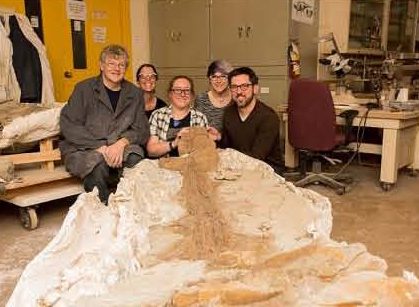
From left to right Ian Morrison (palaeontology technician, Marianne Mader (Director, Centre for Earth&Space/Fossils and Evolution), Victoria Arbour (NSERC postdoctoral fellow), Danielle Dufault (scientific illustrator) and David Evans (Temerty Chair in Vertebrate Palaeontology
Picture credit: Brian Boyle/Royal Ontario Museum
Lots of Taxa within the Sandstone Block
The majority of the skeleton was preserved in a sandstone concretion. The tail, pelvis and dorsal vertebrae were articulated, whilst elements of the anterior of the specimen including the skull were disarticulated but in relative close association to their position in the skeleton when this dinosaur was alive. Assigned to the tribe Ankylosaurini, a phylogenetic analysis nests Zuul crurivastator closer to Scolosaurus cutleri and Dyoplosaurus acutosquameus than to either Euplocephalus and Ankylosaurus.
The dinosaur was found upside down and was excavated in two large blocks, the largest of which, containing the torso, weighed more than 15 tonnes and is still undergoing preparation. The dig site also produced the remains of numerous other Late Cretaceous animals and plants, including theropods, hadrosaurids, turtles, crocodilyforms as well as invertebrates and fossils of some of the vegetation that the armoured dinosaur might have fed upon.
The presence of abundant soft tissue preservation across the skeleton, including in situ osteoderms, skin impressions and dark films that probably represent preserved keratin, make this exceptional skeleton an important reference for understanding the evolution of dermal and epidermal structures within the Ankylosaurinae clade.
A Close View of Preserved Soft Tissue on a Bony Spike on the Tail of Zuul
Picture credit: Brian Boyle/Royal Ontario Museum
The Skull and Jaws
The skull and jaws represent some of the best preserved ankylosaurid material ever found. Once the skull had been prepared, the scientists were amazed at the detail that was revealed. It led to comments that the skull and the jaws looked like that they had sculpted just a few days earlier, rather than representing the remains of an animal that roamed the United States at least 75 million years ago.
The Beautifully Preserved Skull and Jaws of Zuul crurivastator
Picture credit: Brian Boyle/Royal Ontario Museum
Zuul crurivastator
The newest member of the ankylosaurids had four large horns on its head. One directly behind each eye (squamosal horn) and another horn that stuck out sideways from just underneath and slightly behind each eye-socket (quadratojugal horn). It is these horns and the arrangement of the bony scales on the snout that enable palaeontologists to identify different types of ankylosaur.
Co-author of the scientific paper, David Evans (Curator of Vertebrate Palaeontology at the Royal Ontario Museum), stated:
“The preservation of Zuul is truly remarkable. Not only is the skeleton almost completely intact, but large parts of the bony armour in the skin are still in its natural position. Most excitingly, soft tissues such as scales and the horny sheaths of spikes are preserved, which will be a focus of our future research.”
Royal Ontario Museum Palaeontologists Victoria Arbour and David Evans Study the Fossil
Picture credit: Brian Boyle/Royal Ontario Museum
The scientific paper: “A new Ankylosaurine Dinosaur from the Judith River Formation of Montana, USA, Based on an Exceptional Skeleton with Soft Tissue Preservation” by Victoria M. Arbour and David C. Evans.
Visit the Everything Dinosaur website: Everything Dinosaur.



